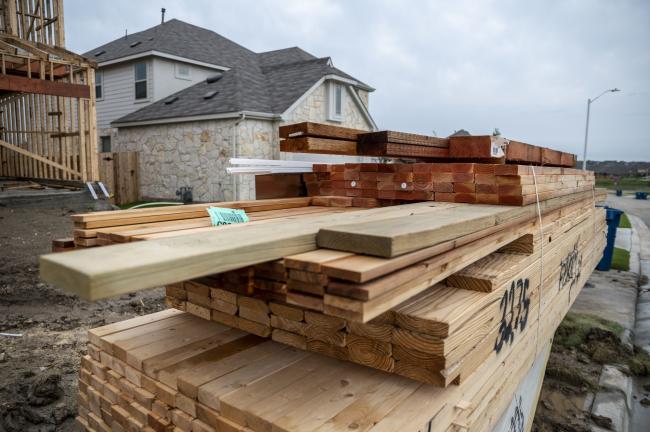(Bloomberg) -- U.S. lumber futures jumped for the second straight day Thursday, as signs of demand held strong for the key building material that has raised the cost of new homes.
The contract for July delivery on the Chicago Mercantile Exchange surged to the maximum amount allowed for the day, up $63 to $1,390 per 1,000 board feet, just $343.50 below the record-high reached on May 10. At some point in each of the previous three sessions, July futures fell by the maximum amount allowed, showing how volatile the market has been.
“Futures are starting to get twitchy. The next two days will tell us who’s in charge,” RCM Alternatives analyst Brian Leonard said in a note, referring to the mills that sell lumber and buyers who are trying to secure the best price.
This month’s record high was seen as unsustainable by many, but the market appears to be looking for the best level that reflects demand as mills ramp up production, and some building projects are placed on hold due to difficulty getting materials and soaring prices.
Though U.S. housing starts data fell in April, building remains strong while the ramp-up in lumber supplies has not yet reached the level to fulfill near-term demand, Joy Robles, who trades lumber on the cash market for Sherwood Lumber, said in a note.
“Hope you don’t get motion sickness because this will be one continued wild ride,” she said.
Higher wood prices will hold at least for the near-term, Fastmarkets RISI, a price reporting and analytics firm that specializes in forest products, said in a report released Thursday.
“Mill labor shortages were already an issue prior to the pandemic and will continue to hamper the ramp-up of production,” Fastmarkets said.
Even though the do-it-yourself renovations activity that has added fuel to the market since mid-2020 is waning, the shift to contractor-intensive home improvements, combined with elevated new home construction, will keep lumber demand strong, according to Fastmarkets.
Strong prices come on the heels of a 5% demand increase in the U.S. and Canada for softwood lumber and panels in 2020, to the highest levels since 2007. At the same time, North American softwood lumber production grew just 1% while demand exceeded production for the second straight year, Fastmarkets said.
“Demand is up across the board in almost every wood product end-use market and will continue to march higher through 2021,” the report said.
©2021 Bloomberg L.P.
